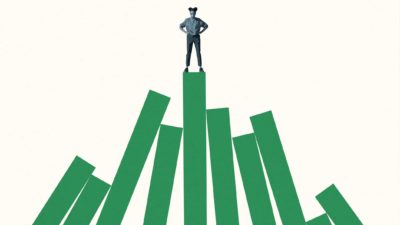According to the ABS, the average Australian earnings around $65,000 a year. Wouldn't it be great to earn $65,000 a year in dividend income? I'm going to demonstrate how to do that in this article.
COVID-19 makes things a bit tougher to earn and think about your personal finances right now. But you can start planning for when you can put your money ideas into action.
Here are the four main steps to getting large sums of dividends each year:
Earn money
This point seems like a very obvious one. But there's no getting around it. Money makes money. And you have to earn some money before you can start investing it.
I'm no career expert and it's a lot harder to earn money, or make more money, in the current economic conditions. But you have to do something to change your situation. Investing in yourself should provide the best return on your time or money. It could be a university degree, but it doesn't have to be. It could be a diploma. It could just be taking free online courses to boost your skills. Anything to show a potential employer you're the one to employ and that you have a will to learn. Sometimes you just need that piece of (e-)paper to get in the door, or Zoom call, for an interview with your potential employer.
Perhaps learning or getting a certificate isn't what's needed for your income boost. Perhaps it's just a case of negotiating a pay rise, getting a second job or starting your own business. Just make sure that your potential business idea can go somewhere and make a profit, a hobby can end up costing money.
Avoid debt
Debt is the financial embodiment of impatience. Compound interest can work against you, even when interest rates are so low. Besides, if you're buying something (apart from a property) with debt then perhaps that suggests you shouldn't be buying it right now – save instead! Saving cash is much better for your bank balance.
Credit card debt interest and car financing are two of the biggest drains on a monthly budget. Though education debt may be a necessary evil to unlock a high-paying profession for you.
Save your money
Live within your means. Spend less than you earn. It all boils down to deliberately saving your money. The more you save the more you can invest.
You don't necessarily need to live the ultimate frugal, minimalist lifestyle if that's not enjoyable to you. It's your life and your money. There's merit to spending some of it now rather than saving every last cent. But just make sure you are getting value and enjoyment from that spending. But you need to have saved money to invest it.
If you earn $500,000 a year after tax and spend $490,000 then you'd only have $10,000 to invest. If you earn $60,000 a year after tax and spend $45,000 then you have $15,000 to invest. Every household budget is different, but I'm sure there are some good savings you can create without changing your life too much.
Invest
The final piece of the puzzle is to invest and let compound interest do its work.
To make $65,000 of annual income you still need a large portfolio. But you can achieve that goal over time. You could choose exchange-traded funds (ETFs) for your portfolio like BetaShares Global Sustainability Leaders ETF (ASX: ETHI), BetaShares Global Quality Leaders ETF (ASX: QLTY) and iShares S&P Global 100 ETF (ASX: IOO).
You could go for quality fund managers to help you get there like Magellan Global Trust (ASX: MGG), WAM Microcap Limited (ASX: WMI), MFF Capital Investments Ltd (ASX: MFF) and Future Generation Global Invstmnt Co Ltd (ASX: FGG).
Or you could go for the best ASX growth shares you can find. I really like Bubs Australia Ltd (ASX: BUB) at the moment.
Some of my favourite dividend shares on the ASX are: Washington H. Soul Pattinson and Co. Ltd (ASX: SOL), Brickworks Limited (ASX: BKW), APA Group (ASX: APA), WAM Microcap Limited (ASX: WMI) and Rural Funds Group (ASX: RFF).
It may take a decade or three to build up the necessary portfolio to make $65,000 a year in dividends, but you can get there if you keep building. How much you need will depend on the yield of the portfolio. Ignoring tax, a $1 million portfolio would need a yield of 6.5% to make $65,000 a year.








